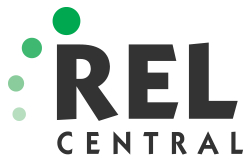Teaching Math to Young Children for Families and Caregivers
These videos and activities provide families with information about how to support children as they practice math skills at home.
Geometry, Patterns, Measurement, and Data Analysis
Overview
Although numbers may be the first things that come to mind when you think about math, many other skills are equally important. For example, young children can begin to recognize shapes in the world around them and become increasingly aware of the similarities and differences between shapes as they create and use them with building blocks and in drawings, and by completing puzzles. The patterns children begin to observe in these activities and their environments set the foundation for algebraic reasoning. Measurement and data analysis are also developing in young children. You can support your child in these skills by offering him or her a wide variety of experiences and materials.
Videos
Early Geometry and Patterns
This video introduces ways to help children recognize shapes and patterns in the world around them.
Early Childhood Math: Geometry, Patterns, Measurements, and Data Analysis
This video introduces ways to support geometry, patterns, measurement, and data analysis. Following the video, you can review more activities to do during your everyday routines and play.
Quick Tips, Resources and Activities
Recognizing, Naming, and Comparing Shapes
Your child is quickly learning to recognize and name many common shapes such as circles, triangles, and squares. They learn about the attributes of shapes and begin to describe shapes based on these attributes–“It has three sides, so I know it’s a triangle.” Young children use their developing knowledge about shapes and their attributes when they build with blocks, draw, and work puzzles. These types of experiences require children to compare and match shapes; reorient shapes by rotating, flipping, or sliding them; and put shapes together to make new shapes. For example, two triangles can be flipped and rotated to form a square, a parallelogram, a larger triangle, and other irregular shapes.
Quick Tips:
- Go on a walk and ask your child to point out the shapes they see around them.
- Encourage your child to name and describe the shapes, counting the number of sides or angles they have.
- Look for different examples of a shape to expand your child’s understanding. For example, different triangles can vary in appearance and children need to see lots of examples.
- Grow understanding of shapes and spatial relations to use shapes more efficiently and accurately. For example, children can think about where a puzzle piece might go and how it should be oriented before placing it. Use words like “on,” “under,” and “next to” to describe the location of objects.
Handouts:
Identifying and Creating Patterns
Patterns are regular, predictable arrangements of things. Anything–objects, numbers, shapes, sounds, actions, or events–can make a pattern. Patterns are important in young children’s lives because they provide order and predictability. They help children learn, remember, and anticipate what comes next. Additionally, learning about patterns in the early years sets the stage for a future understanding of algebraic concepts. Preschoolers need opportunities to engage in a variety of experiences with patterns; for example, in music and movement, art, playing with blocks, and stories. Through these experiences, they learn to recognize and reproduce patterns that they hear or see and even create their own patterns.
Quick Tips:
- Help your child to find patterns in their environment. They may point out stripes on their clothes, designs in rugs, or bricks on the sides of buildings.
- Ask your child what patterns they notice in their day. You might point out the predictability of a bedtime routine or mealtime. Talk about what parts of their day repeat.
- Sing songs with your child and retell stories that have repetitive rhythms and words.
- Encourage your child to determine their own rules for sorting and organizing objects.
Handouts:
Measuring
For young children, measurement is about exploring and comparing measurable dimensions–such as length or weight–in the world around them using standard (inches and pounds) or nonstandard units (length of their arm or blocks). Your child’s interest in measurement is reflected when they ask questions such as “Am I older than my brother?” or “Who is taller, me or Beth?”
Quick Tips:
- Provide opportunities to make direct comparisons, such as invite your child to stand back-to-back with a friend, parent, or sibling to see who is taller. Or try holding two different objects in each hand and talk about which is heavier.
- When you are comparing, use language to describe objects, people, and events; for example, taller/tallest, faster/fastest, heavier/heaviest.
- Explore nonstandard measurement tools; for example, hands, paper clips, blocks, and paper cups.
- Explore standard measurement tools; for example, measuring cups, balance scales, and measuring tapes.
Handouts:
Collecting and Organizing Information
Graphs and charts show numbers and quantities represented in a variety of ways. Graphs are a great way for children to practice organizing the information they might have counted or sorted in a visual way. Graphs will help your child to associate number concepts, vocabulary, quantities, and written numerals in meaningful ways.
Quick Tips:
- Introduce how to graph with simple tally marks or pictures to show how long different objects are.
- Try creating graphs that describe different characteristics of people in the family, such as hair color or favorite foods.
Handouts:
- (Coming Soon)
This information was prepared by Regional Educational Laboratories Appalachia, Central, and Northwest
